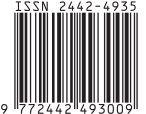Arsitektur dan Komposisi Mineral Atom Tulang Korpus Mandibula Tikus dengan Perbedaan Konsistensi Diet
DOI:
https://doi.org/10.19184/stoma.v19i1.30695Abstract
The physical consistency of diet can affect the force exerted during muscle contraction when chewing food from the load sent to the mandible and cause adaptation of bone structure. The mechanical properties of bone are determined by the architecture of the trabeculae covering the walls and spaces. The difference in bone microstructure are influenced by the properties of the atoms that substitute for the composite. This study aimed to analyze the effect of dietary consistency on bone architecture and atomic mineral composition of the mandibular corpus. This study used eighteen male wistar rats aged 3 weeks were randomly divided into three groups, the hard diet (HD), the soft diet (SD) and the liquid diet (LD). After eight weeks the mice were sacrificed. The right mandibular corpus was examined to study the effect of masticatory functional load on the architecture and atomic mineral composition of bone. Qualitative analysis of SEM images showed that the HD group had the best bone architecture compared to the other groups. The atomic composition of Ca, Fe and Ca/P ratio in the HD group were also higher based on SEM-EDX examination. The results of this study on the mandibular corpus showed that masticatory muscle activity through the consistency of the diet consumed could affect the bone quality and quantity of atomic mineral composition. Further research is needed to elucidate the molecular mechanisms of how atomic minerals can play a role in influencing bone quality.







